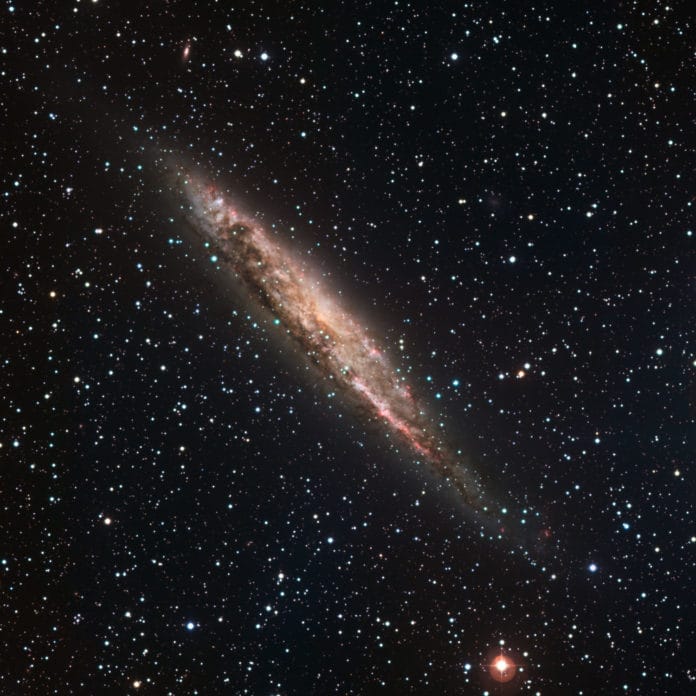NGC 4945 is a spiral galaxy that lies about 12.1 million light-years from the Earth. It hosts one of the brightest active galactic nuclei (AGN) in the hard X-ray band.
Several bright x-ray sources, including ultra-luminous X-ray sources (ULXs), have been observed in the galaxy.
Now, a team of astronomers led by Shuntaro Ide of Osaka University reports the detection of a transient X-ray source in NGC 4945. The newly discovered source, designated Suzaku J1305−4930, appears to be a black hole binary.
This newly observed transient X-ray source has the luminosity required to classify it as a ULX. The Discovery was made using the X-ray Imaging Spectrometer (XIS) onboard the Japanese Suzaku spacecraft.
Astronomers noted, “Among the seven Suzaku observations of this region, the source was detected in four observations from July 2010 to August 2010.”
The research found that the inner disk radius of Suzaku J1305−4930 is around three times the Schwarzschild radius, and its mass is about ten solar masses. According to the astronomers, these results, together with the measured luminosity, suggest that Suzaku J1305−4930 is a stellar-mass black-hole binary.
Scientists noted, “If Suzaku J1305−4930 is a stellar-mass black-hole binary in NGC 4945, it means that we have serendipitously obtained multiple observations with relatively short intervals in between of a source of this class outside our Galaxy.”
Authors noted, “Their Ldisk vs. Tin diagrams exhibit clear state transitions from the standard-disk state to the slim-disk state. Our results on Suzaku J1305−4930 may alternatively be interpreted with a similar state transition.”
Journal Reference:
- Ide et al., Discovery of a transient X-ray source Suzaku J1305-4930 in NGC 4945, arXiv:2007.04465 [astro-ph.HE] DOI: 10.1093/pasj/psaa023
